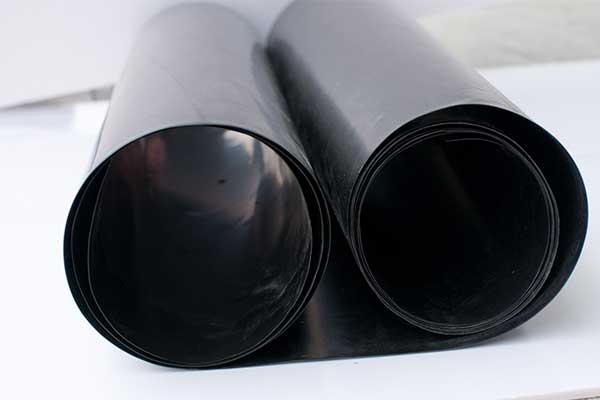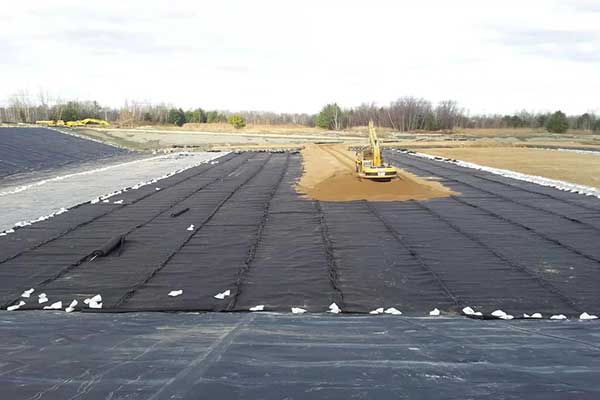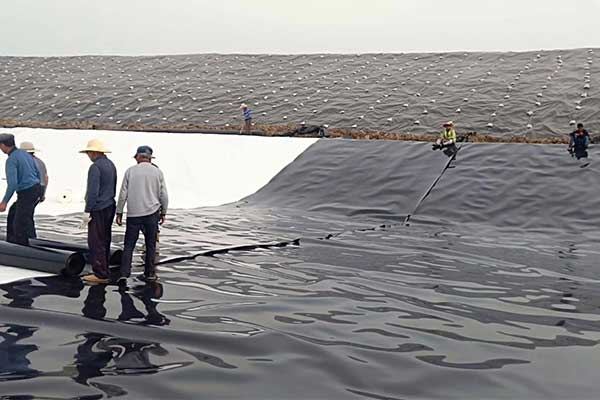What is a Geomembrane? Types, Applications, Benefits
Geomembranes are an essential component in various industrial and environmental applications, known for their ability to provide robust, impermeable barriers. This article will explore what geomembranes are, their types, applications, and benefits.

What is a Geomembrane?
A geomembrane is a synthetic membrane liner or barrier used to control fluid or gas migration in a human-made project, structure, or system. They are typically made from polymeric materials such as polyethylene, polypropylene, PVC, and other materials, designed to offer long-term performance and durability.
Types of Geomembranes
- HDPE (High-Density Polyethylene): Known for its high chemical resistance and durability, HDPE geomembranes are widely used in landfill liners and mining applications.
- LLDPE (Linear Low-Density Polyethylene): Offers greater flexibility than HDPE, making it suitable for applications where conformity to surfaces is crucial.
- PVC (Polyvinyl Chloride): Flexible and easy to install, PVC geomembranes are often used in applications such as decorative ponds and wastewater treatment plants.
- EPDM (Ethylene Propylene Diene Monomer): Known for its excellent elasticity and weather resistance, EPDM is commonly used in roofing and pond liners.

Applications of Geomembranes
1. Environmental Protection
- Landfill Liners and Covers: Geomembranes are used as liners at the base and as covers on the top of landfills to prevent contamination of groundwater and reduce the escape of landfill gases.
- Water Reservoirs and Canals: They help prevent water loss through seepage, thereby conserving water in reservoirs, canals, and artificial lakes.
- Mining: Used as liners in heap leach pads and tailing ponds to prevent toxic leachates from contaminating surrounding environments.
2. Industrial Uses
- Containment Ponds: Geomembranes provide secure containment for hazardous and non-hazardous liquids in various industrial processes.
- Secondary Containment: Often used around storage tanks and pipelines to contain spills and leaks.
3. Agricultural Applications
- Agricultural Ponds and Lagoons: Used to line ponds and lagoons for irrigation, livestock watering, and waste containment.
- Aquaculture: Geomembranes ensure water retention and quality in fish and shrimp farming.

Benefits of Geomembranes
Impermeability
Geomembranes provide a nearly impermeable barrier to fluids and gases, making them ideal for containing or excluding liquids and gases.
Chemical Resistance
High resistance to a wide range of chemicals makes geomembranes suitable for use in environments where exposure to hazardous substances is expected.
Durability and Longevity
Designed to withstand harsh environmental conditions, geomembranes offer long-term performance with minimal maintenance.
Flexibility
Materials like LLDPE and PVC offer high flexibility, allowing them to conform to irregular surfaces and accommodate ground movements.
Conclusion
Geomembranes are a vital tool in modern environmental and industrial applications, providing effective solutions for containment and protection. By understanding the different types of geomembranes and their specific benefits, you can make informed decisions to ensure the success and sustainability of your projects. Whether you are managing a landfill, constructing a water reservoir, or engaging in agricultural practices, geomembranes offer the reliability and performance necessary to meet stringent environmental and operational standards.
Get Quality Geomembrane
Shelter Road Construction is a professional geomembrane manufacturer and supplier that can provide different types of geomembranes to meet customers’ different project needs. If you are looking for geomembranes for your project, you can contact us directly for more information.
